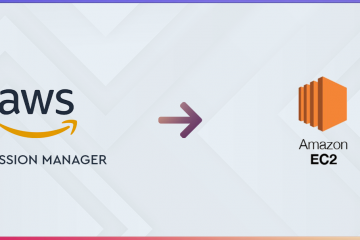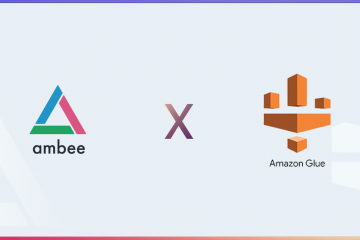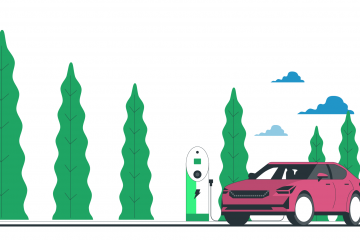What are LoRa and NB-IoT?
LoRa and NB-IoT both operate within LPWAN technology. They are two major standards for low-power IoT devices. The LoRa Alliance developed LoRa in 2015 as a secure, energy-efficient IoT standard that makes it easy to onboard new devices. LoRaWAN is a low power wide area network (LPWAN), developed to connect the Internet of Things devices and sensors for mass deployment. LoRa is developed to provide IoT devices extended battery life in the range of several years at the same time a LoRa network has extended range and is cost-effective to deploy. LoRaWAN is an LPWAN specification intended for long-range communications from base stations with a maximum range of 15-30km.NB-IoT is an abbreviation for Narrow Band IoT, a cellular standard developed by 3GPP. NB-IoT is not a standalone technology, but a cellular standard that aims to standardize IoT devices to be interoperable and more reliable. It can be implemented in a standalone or in-band spectrum manner and does not require gateways, while each LoRa device needs a gateway to function (which can affect total cost). NB-IoT connects base stations directly with sensors.
Key Differences
Both LoRa and NB-IoT standards were developed to improve security, power efficiency, and interoperability for IoT devices. Each features bidirectional communication (meaning the network can send data to the IoT device, and the IoT device can send data back), and both are designed to scale well, from a few devices to millions of devices.Major differences between LoRa and NB-IoT standards:
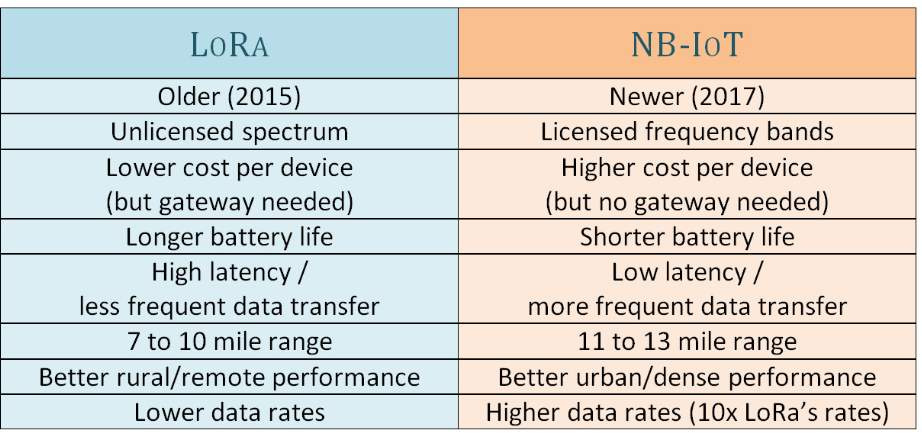
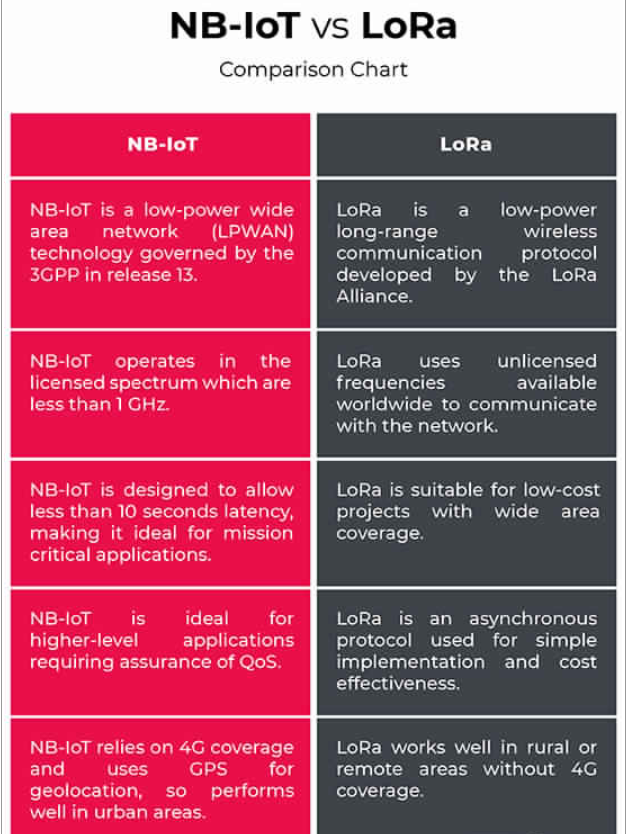
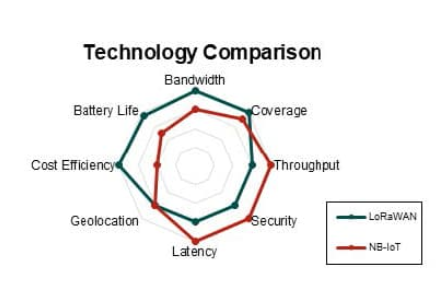
At 32 mA peak current—one-fourth of NB-IoT’s consumption—LoRaWAN devices last longer, especially in applications with high refresh rates.
Power Consumption
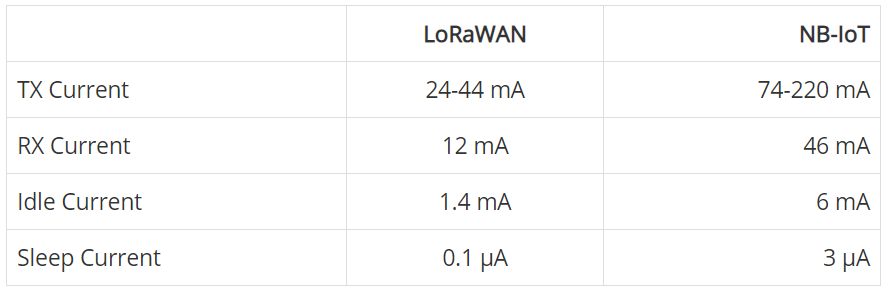
Latency:
The most important differentiator of LoRa and NB-IoT is their latency. Here’s a quick refresher on network latency: networks and devices communicate with each other using data packets. But these data packets don’t always get transferred immediately, because it eats up battery power and network coverage. Latency is the time delay in transferring data after making a transfer request. A low latency device “checks in” with the network more often than a high latency device. For instance, a smart sensor detects that a pipe has broken and needs to send an alert to the network. If this sensor is high latency, it doesn’t transfer data to the network very often, and it might be a few hours before the network receives the alert. If the sensor is low latency, the network will receive the alert much sooner.Location / Density:
Because LoRa devices use gateways, they work well in remote or rural areas without 4G coverage. They use unlicensed spectrum to communicate with the network. They also work well when they are in motion (for instance, on a truck, plane, or ship). This makes them well suited for supply chain and transportation applications. LoRa’s geolocation is non-GPS, so devices offer location services without heavy battery usage. NB-IoT devices don’t need a gateway, and they rely on 4G coverage, either using spectrum within LTE, GSM spectrum or “standalone,” which refers to unused frequency within LTE guard bands. This means that devices with NB-IoT chipsets perform better in indoor applications and dense urban areas. NB-IoT uses GPS technology for geolocation.Power Usage & QoS:
While NB-IoT and LoRa are both designed for low-power devices, NB-IoT’s lower latency means that it uses battery juice faster than LoRa. The trade-off is that it can guarantee a better quality of service (QoS) than LoRa due to faster response times. NB-IoT also boasts much higher data rates than LoRa.LoRaWAN Frequency Bands
LoRaWAN operates in the sub-gigahertz frequency bands and it’s specification varies from region to region because of the regulatory requirement.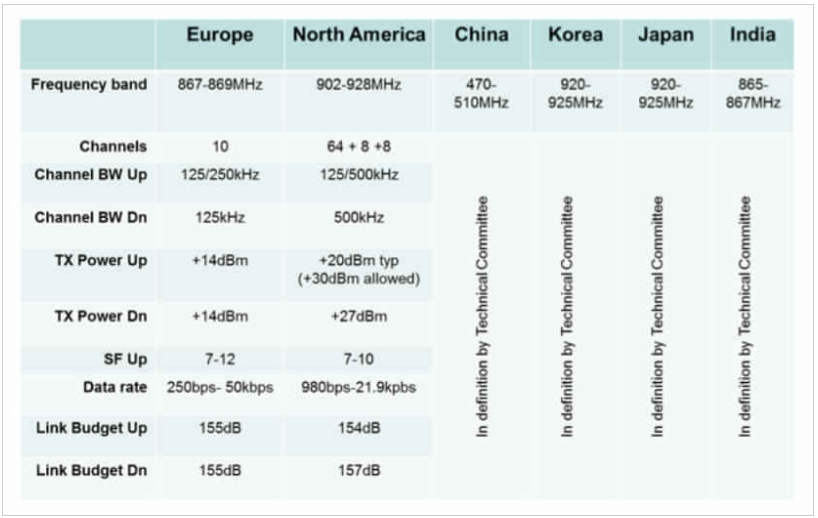
What are the best uses of this technology?
Depending on the needs of an application, one technology may be more suitable than another. For most applications, the biggest considerations are latency, battery life, coverage, and cost. In this capacity, NB-IoT and LoRa serve different purposes.Smart metering:
Most meters process only small amounts of data each day, so LoRa is best for most applications, assuming that the cost of installing a gateway is not prohibitive. NB-IoT is a good choice for applications that need more frequent communication or high data throughput.Manufacturing:
Industrial automation takes many forms, and there is no one answer for this space. NB-IoT is a better choice for manufacturing applications that need more frequent communication and guaranteed QoS, while LoRa is a better choice for lower-cost sensors and longer battery life. Both are useful in different environments.Retail & POS:
NB-IoT is a better choice. Retail transactions involve less predictable data and surges of customers, so the low latency of NB-IoT is not a good fit. Retailers risk losing sales (and customers) with the long latency time of LoRa applications.Supply chain tracking:
The clear winner for supply chain and transportation applications is LoRa, because its mobile gateways perform reliably on a moving vehicle. Since shipments in transit or in storage don’t need to transfer much data, LoRa’s higher latency, lower data rates, and longer battery life all make sense. LoRa is also better suited for coverage in rural warehouse areas.Smart city/buildings:
LoRa is the better choice for most smart buildings, due to easier placement of gateways. However, buildings have their own electricity supplies and therefore have less of a need for LoRa’s battery efficiency, so NB-IoT may be a better option for smart buildings with very high data throughput or a need for very low latency, such as high-security facilities. NB-IoT is also likely better for smart city networks that connect dozens or hundreds of buildings, whereas LoRa is better for a single-building application.Agriculture:
Spotty cellular network coverage in rural areas makes LoRa the obvious choice since LoRa doesn’t require 4G. LoRa works particularly well to track agricultural indicators, such as water usage, soil pH, and temperature gauges, which don’t shift rapidly or need immediate responses. Not only that, but LoRa’s lower price point is also a top-selling point for farmers.
